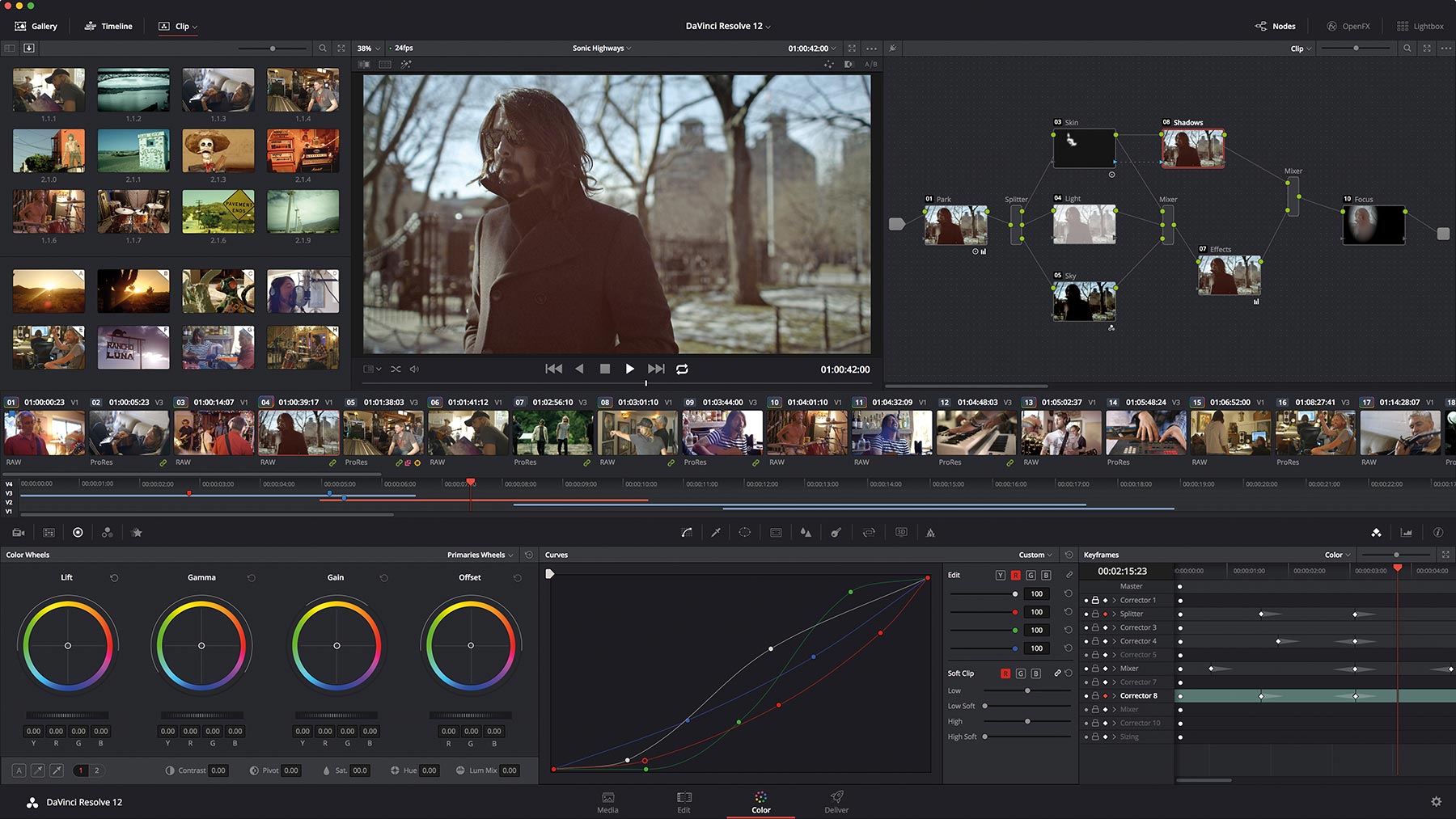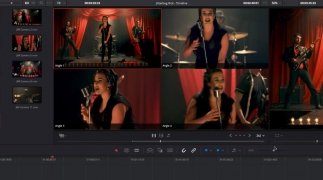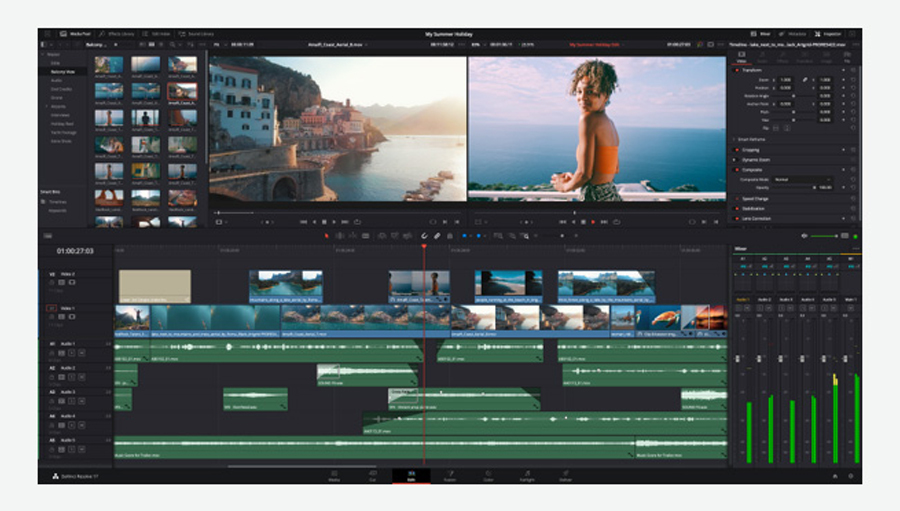
- #Davinci resolve studio 17 mac portable
- #Davinci resolve studio 17 mac Pc
- #Davinci resolve studio 17 mac mac
- #Davinci resolve studio 17 mac windows
Each video needs different kinds of work - from cutting and color-grading, to stabilizing shaky footage and finally rendering the video out and doing other things in the meantime - making a thumbnail for YouTube, doing other work-related tasks. We work on about 3 to 4 videos per week, and about 14 videos a month.
#Davinci resolve studio 17 mac mac
So, how does the Mac Studio help? The biggest gain from the Studio is time.
#Davinci resolve studio 17 mac windows
We never really found the Windows systems bad, but the ARM-based Macs just fit so much better in our workflow. A quick check online shows that we could've built a Ryzen 9 5900X machine with a 12GB Nvidia RTX 3060 and 32GB of RAM for slightly less than the Mac Studio.īut that machine would be a lot bigger, much noisier, and ultimately wouldn't give us the experience we want.
#Davinci resolve studio 17 mac Pc
Speaking of computers, yes, we technically could have gotten a PC for the money we paid for the Mac.
#Davinci resolve studio 17 mac portable
It's also a very portable little computer, especially compared to a desktop PC, even with the smaller form factors. The Mac Studio has all of those ports, as well as 4 Thunderbolt 4 USB-C ports, 2 full-sized USB-A ports, two additional USB-C ports on the front, and an ethernet port. We would connect a keyboard and mouse to the Air, and we'd have a dongle that enabled an SD card slot and an HDMI connection for an external monitor. It also comes with ports, and we love ports. Our unit's retail package includes a single, braided power cable and a single, black Apple sticker. The M1 Ultra version just felt like an overkill at twice the price - money we felt could be better spent on other parts of the video production process. It comes in a premium retail package with a well-padded floating center platform on which the Mac Studio sits while in transit, ensuring nothing can happen to it en route to you. It comes with an M1 Max processor that has 10 CPU cores (8 powerful and 2 efficient), 24 GPU cores, 32GB of RAM, and a 512GB NVME drive. So, why the base-model Mac Studio? Well, it's doing the job and it's price isn't prohibitive. The Air didn't cut it, so we got the basic Mac Studio, hoping that it will give us the best of both worlds. That makes it difficult to manipulate color accurately. Basic video editing works just fine, but as soon as we begin to add our animations, text layers, and titles, color corrections, and we need to resort to not just half resolution, but quarter resolution playback. The Air just works, pardon the cliche, and we've had no crashes with DaVinci Resolve since moving to macOS.īut the Air simply isn't powerful enough for our needs.

For some reason, we haven't had the best of luck with Windows-based PCs and have grown accustomed to the occasional crash that while not showstopping, is certainly hugely irritating.

While it's not as easily quantifiable as speed, it's its stability and reliability that have made the biggest impression on us. We've produced about 40 videos with the MacBook Air so far and can attest to its merits as a video editing computer.

It may not sound like much, but thanks to built-in H.264 and H.265 video encoding, faster unified memory, and DaVinci Resolve's optimizations for the M1 processor, the Air can happily edit 4K video like a far more powerful computer. We first bought the base model MacBook Air with the M1 processor, 7 GPU cores, 8GB of RAM, and 256GB of storage. But when Apple's shift to ARM happened, and we saw the potential it had for video work on a better-optimized platform, we decided to give it a go. Our computers have been custom-built PCs with Nvidia cards. We won't get into too much detail, but we started off with Sony's Vegas editor, struggled for a few years with Adobe's Premiere, and have now mostly turned to DaVinci Resolve as our editor of choice. We've strived to improve it constantly over the years. So it's very important that we have a streamlined workflow. To put things into perspective we churn out about 2 hours of video each month and we get that video from close to 5 hours of B-roll produced by our video crew. Our YouTube channel has grown to 1.5 million subscribers and we publish about three videos per week. We're very serious about reviewing phones, both in written and video form.


 0 kommentar(er)
0 kommentar(er)
